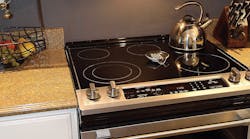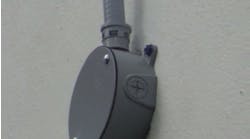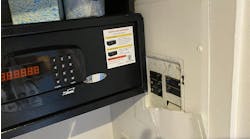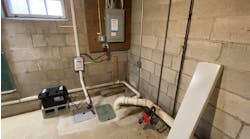All references are based on the 2017 edition of the NEC, unless otherwise noted.
When it comes to deciding on an appropriate type of disconnecting means for this electric range, the Code can be a bit confusing. Hopefully, we can figure it out together.
The first question we need to answer is, “Does this electric range need a disconnecting means?” The answer is yes. Section 422.30 clearly says that every appliance must be provided with a means to simultaneously disconnect each ungrounded conductor supplying the appliance.
The next question we need to answer is, “Where can this disconnecting means be located?” To answer this question, we can start by looking in Sec. 422.33(A). Here, the Code says cord- and plug-connected appliances having an accessible separable connector or an accessible plug and receptacle combination are permitted to serve as the required disconnecting means. So simply sliding this freestanding range out and unplugging it from the receptacle located behind it will meet NEC requirements for an accessible disconnecting means. Or will it?
Further reading of Sec. 422.33(B) may cloud your judgment a bit. This requirement tells us that an electric range with a cord-and-plug connection accessible from the front by removing a drawer will meet the intent of Sec. 422.33(A). Does this mean that a range without a removable drawer, like the warming drawer for the range in the photo, won’t meet the intent of Sec. 422.33(A)? Does this mean that unplugging the range through the removable drawer space is the only way to comply with this requirement? Or does it mean that unplugging the range through the removable drawer space is merely another way to comply with Sec. 422.33(A)? This is an important distinction to make — because if the plug and receptacle are not considered accessible, then Sec. 422.33(A) requires compliance with Sec. 422.31 instead.
For a large appliance like this electric range, Sec. 422.31(B) permits a switch or circuit breaker to serve as the disconnecting means if located within sight of the appliance. Does this mean a 60A disconnect will need to be installed in this kitchen because the circuit breaker panel in this house is in the basement? Another option is to have the switch or circuit breaker be lockable in accordance with Sec. 110.25 if not located within sight of the appliance. Does that mean a lockout kit will need to be installed at the circuit breaker? This could be another possible solution, but you’d better have a discussion with your AHJ on this one.




